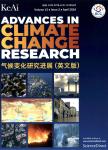Microplastics have light-absorbing ability to enhance cryospheric melting
作者机构:State Key Laboratory of Cryospheric ScienceNorthwest Institute of Eco-Environment and ResourcesChinese Academy of SciencesLanzhou 73000China University of Chinese Academy of SciencesBeijing 100049China College of Earth and Environmental SciencesLanzhou UniversityLanzhou 730000China
出 版 物:《Advances in Climate Change Research》 (气候变化研究进展(英文版))
年 卷 期:2022年第13卷第4期
页 面:455-458页
核心收录:
学科分类:0830[工学-环境科学与工程(可授工学、理学、农学学位)] 0709[理学-地质学] 07[理学] 0708[理学-地球物理学] 0705[理学-地理学] 0706[理学-大气科学] 0816[工学-测绘科学与技术] 070501[理学-自然地理学] 0825[工学-航空宇航科学与技术] 0704[理学-天文学]
基 金:support from the National Natural Science Foundation of China(42071082) the second Tibetan Plateau Scientific Expedition and Research Program(2019QZKK0605) the National Key Research and Development Program of China(2020YFA0608503) the State Key Laboratory of Cryospheric Science(SKLCS-ZZ-2022) the CAs Light of West China program
主 题:Microplastic pollution Cryosphere Climate change Radiative forcing
摘 要:Microplastics are posing the potential threats to the Earth s ***,airborne microplastics were calculated to cause positive net radiative forcing *** to the light-absorbing properties,microplastics may have the effects on the snow/ice surface albedos in the cryospheric regions,which may further enhance the cryospheric melting under the rapid global warming and increasing plastic pollutants dropped into the *** suggested to urgently hasten the systematic studies on microplastics effects on the radiative forcing across the cryospheric regions,and evaluated the possible impact on cryospheric melting in the future.



